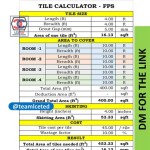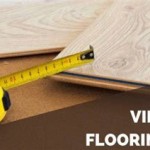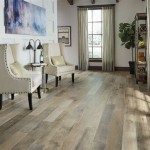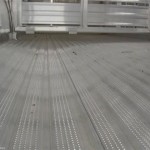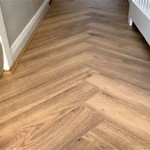Pros and Cons of Installing Vinyl Plank Flooring
Vinyl plank flooring has emerged as a popular choice for residential and commercial spaces due to its versatility, durability, and aesthetic appeal. It offers a cost-effective alternative to hardwood and other natural flooring materials, while mimicking their appearance. However, like any flooring option, vinyl plank flooring presents both advantages and disadvantages that must be carefully considered before making a purchase decision.
Aesthetic Versatility and Design Options
One of the primary advantages of vinyl plank flooring is its extensive range of design options. Manufacturers utilize advanced printing technology to create realistic visuals that replicate the look of natural wood, stone, and tile. This allows homeowners and designers to achieve the desired aesthetic without the cost and maintenance associated with authentic materials.
The variety extends beyond surface patterns. Vinyl plank flooring is available in different sizes, shapes, and textures, enabling customization and unique design schemes. Embossed textures can further enhance the realism, providing a tangible feel that closely resembles the natural material being imitated. The availability of various installation patterns, such as herringbone or staggered layouts, contributes to the overall design flexibility.
Furthermore, vinyl plank flooring can be used in a multitude of rooms, from living rooms and bedrooms to kitchens and bathrooms. Its water-resistant properties make it suitable for areas prone to moisture, where hardwood flooring would be susceptible to damage.
Durability and Resistance to Wear and Tear
Vinyl plank flooring is manufactured to withstand heavy foot traffic and resist wear and tear. The wear layer, a transparent protective coating on the surface of the plank, is crucial in determining the floor's durability. A thicker wear layer provides greater protection against scratches, dents, and stains.
High-quality vinyl plank flooring can withstand the daily rigors of a busy household, including the impact of dropped objects and the movement of furniture. It is also resistant to scuff marks and fading, maintaining its appearance over time. This durability makes it a suitable choice for homes with children and pets.
The water-resistant and, in some cases, waterproof properties of vinyl plank flooring are a significant advantage. Unlike hardwood, which can warp or rot when exposed to moisture, vinyl plank flooring remains stable and unaffected. This makes it an ideal option for kitchens, bathrooms, basements, and other areas where spills and humidity are common.
Ease of Installation and Maintenance
Compared to traditional flooring materials like hardwood or tile, vinyl plank flooring is relatively easy to install. Many vinyl plank flooring products are designed with interlocking edges, often referred to as a "click-lock" system. This allows for a floating installation, where the planks are connected to each other without being glued or nailed to the subfloor.
The floating installation method simplifies the installation process, making it accessible to DIY enthusiasts. It also reduces the time and cost associated with professional installation. However, proper preparation of the subfloor is crucial for a successful installation. The subfloor must be level, clean, and dry to ensure a smooth and stable surface for the vinyl plank flooring.
Maintaining vinyl plank flooring is also straightforward. Regular sweeping or vacuuming is sufficient to remove dirt and debris. For more thorough cleaning, a damp mop with a mild detergent can be used. Unlike hardwood, vinyl plank flooring does not require waxing or polishing. Its stain-resistant properties also make it easy to clean up spills and messes. The ease of maintenance contributes to the long-term cost-effectiveness of vinyl plank flooring.
Potential Drawbacks and Considerations
While vinyl plank flooring offers numerous advantages, it is important to consider its potential drawbacks. One concern is its environmental impact. Vinyl plank flooring is primarily made from polyvinyl chloride (PVC), a synthetic plastic polymer. The production of PVC can release harmful chemicals into the environment, and the disposal of vinyl plank flooring can contribute to landfill waste.
However, advancements in manufacturing processes have led to the development of more environmentally friendly vinyl plank flooring options. Some manufacturers are using recycled materials and reducing the use of harmful chemicals. It is advisable to research and choose products that are certified by environmental organizations and meet specific sustainability standards.
Another potential drawback is the perceived lack of value compared to natural materials like hardwood. While vinyl plank flooring can mimic the appearance of hardwood, it does not have the same inherent quality and prestige. This may be a consideration for homeowners who are concerned about resale value.
The comfort level of vinyl plank flooring can also be a concern for some. While it is generally more comfortable than tile or concrete, it may not be as soft and warm as carpet or hardwood with a padded underlayment. However, adding an underlayment beneath the vinyl plank flooring can improve its comfort and sound absorption.
Limitations in Repairability
While vinyl plank flooring is durable, it is not impervious to damage. In the event of scratches or dents, repairing individual planks can be challenging. Unlike hardwood, which can be sanded and refinished, vinyl plank flooring typically requires replacement of the damaged planks. This can be a more time-consuming and costly process. Securing extra planks during the initial installation is crucial for future repairs.
Furthermore, the quality of the installation is critical in preventing damage to vinyl plank flooring. Improper installation, such as uneven subfloors or inadequate expansion gaps, can lead to issues such as buckling or gapping. It is important to carefully follow the manufacturer's instructions and, if necessary, seek professional installation to ensure a long-lasting and visually appealing floor.
Subfloor Imperfections
Although vinyl plank flooring can be installed over a variety of subfloors, it is not always forgiving of imperfections. Significant unevenness or damage in the subfloor can telegraph through the vinyl plank flooring, creating an uneven surface and potentially compromising the integrity of the floor. Proper subfloor preparation is essential to ensure a smooth and stable surface for the vinyl plank flooring.
Subfloor preparation may involve leveling the subfloor with self-leveling compound, repairing any cracks or holes, and ensuring that the subfloor is clean and dry. In some cases, it may be necessary to install a new subfloor altogether. The cost and effort involved in subfloor preparation should be factored into the overall budget for the flooring project.
Potential for Off-Gassing
Like many manufactured products, some vinyl plank flooring may emit volatile organic compounds (VOCs), a process known as off-gassing. VOCs are chemicals that can evaporate from materials and potentially affect indoor air quality. Exposure to high levels of VOCs can cause health problems such as headaches, dizziness, and respiratory irritation.
However, many manufacturers are now producing low-VOC vinyl plank flooring products that meet stringent indoor air quality standards. Look for products that are certified by organizations such as FloorScore or Greenguard. These certifications indicate that the product has been tested and meets specific VOC emission limits. Proper ventilation during and after installation can also help to minimize off-gassing.
Heat Sensitivity
Vinyl plank flooring is sensitive to extreme heat and direct sunlight. Prolonged exposure to high temperatures can cause the planks to expand and potentially buckle or warp. Therefore, it is important to take precautions to protect vinyl plank flooring from excessive heat. This may involve using window coverings to block direct sunlight, avoiding the placement of heat-generating appliances directly on the floor, and ensuring adequate ventilation in areas prone to high temperatures.

The Pros And Cons Of Vinyl Plank Flooring Ohio S Best Home Improvement Roofing Bathroom Remodel Experts
Pros And Cons Of Luxury Vinyl Flooring In Basements

Vinyl Flooring Pros And Cons Forbes Home

Vinyl Flooring And Floor Tiles The 8 Pros Cons

Pros And Cons Of Installing Vinyl Flooring On Stairs

Vinyl Vs Laminate Flooring Pros Cons And Differences Forbes Home

Pros And Cons Of Installing Vinyl Flooring On Stairs Lx Hausys

Installing Vinyl Flooring On Stairs Pros And Cons Fixit

Luxury Vinyl Flooring Pros And Cons Plank Guide Reallyfloors America S Est Hardwood

Vinyl Flooring The Pros And Cons
Related Posts

